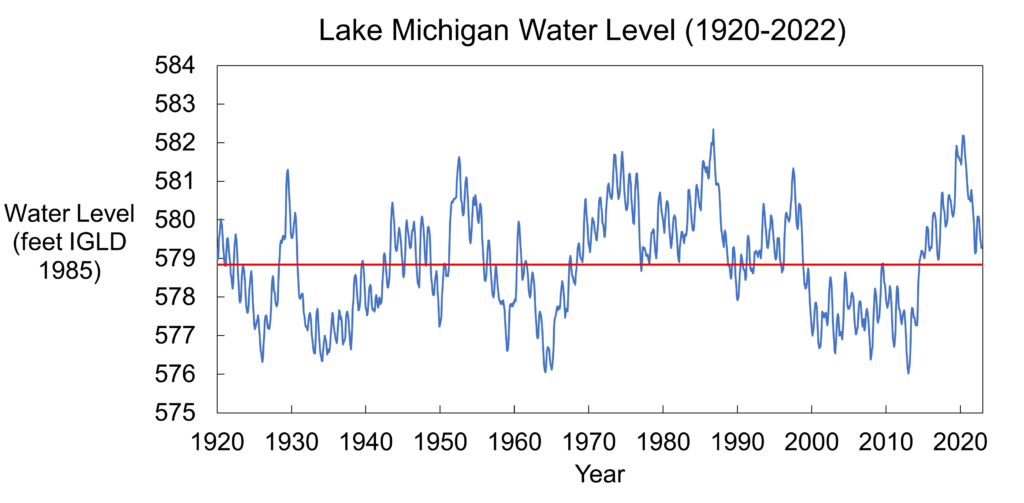
Lake Michigan water levels continued their seasonal decline, decreasing 5 inches from November to December. Though Lake Michigan is now about 31 inches below the highest monthly water level recorded for December 1986, the Lake is still about 4 inches above the long-term average water level for the month. Water levels are expected to continue to decline throughout the next month.
Watch the USACE’s “On the Level” Youtube channel for monthly updates and information about the Great Lakes’ water levels and forecasts from Detroit District Hydraulics and Hydrology experts.
Water Levels on Lake Michigan-Huron
Here are five things to know about water levels on Lake Michigan for December 2022.
What are the current water levels on Lake Michigan?
The water level of Lake Michigan as of December 9, 2022, was at an elevation of 578.97 feet above sea level (from the International Great Lakes Datum). To put this level into perspective, here are some statistics for Lake Michigan relative to the period of water level records measured from 1918 to present (statistics from USACE’s Weekly Water Level Update and USACE’s Water Level Summary).
| Compared to… | Current Water Levels are… |
| One month ago | 5 inches lower |
| One year ago | 9 inches lower |
| Long-term December monthly average (1918 to 2021) | 4 inches higher |
| Record November monthly mean (set in 1986) | 31 inches lower |
What is the outlook for future water levels?
Water levels on Lake Michigan continued their seasonal decline from November to December with approximately 5 inches of change. The USACE is projecting that water levels continue their seasonal decline and drop another 2 inches by January (see the water level forecast issued for December 2022 below). The dropping water levels are a seasonal occurrence in the fall due to increased evaporation. In the spring, evaporation decreases due to the increasing air temperatures while the water is cool causing water levels to peak around mid-summer. In an average year, water levels vary seasonally by about one foot from a peak in summer to a low in winter, though every year is different. You can read more about this as well as other myths about water level fluctuations in this blog.
Over the next 6 months, Lake Michigan is predicted to be 4 to 9 inches below last year’s levels, but 4 to 5 inches above long term average water levels indicated by the dashed blue line in the image below.
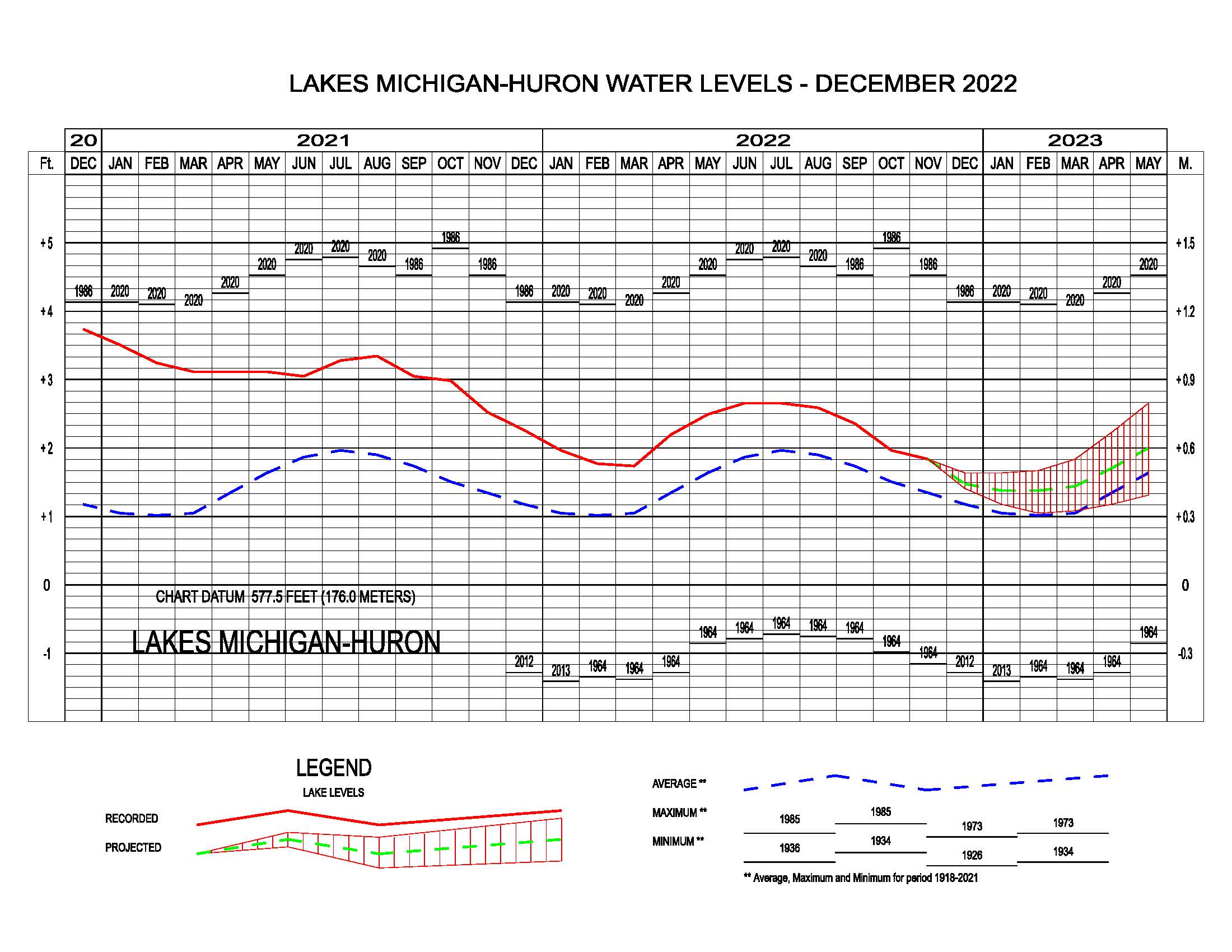
USACE six-month water level forecast for Lake Michigan-Huron retrieved for December 2022 from: https://www.lre.usace.army.mil/Missions/Great-Lakes-Information/Great-Lakes-Water-Levels/Water-Level-Forecast/
What is behind Great Lakes water level fluctuations?
The story of Great Lakes water level changes is told by Net Basin Supply. Net Basin Supply (NBS) accounts for the water going into a lake in the form of precipitation and runoff minus water leaving a lake due to evaporation of water from the lake surface.
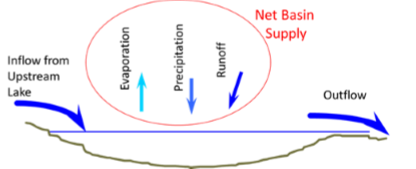
NBS represents the net influence of precipitation over the lake, runoff from a lake’s watershed into the lake, and evaporation from the lake’s surface. Image credit: US Army Corps of Engineers.
In general, when Net Basin Supply is positive, more water enters the lake than leaves, causing a rise in lake levels. When Net Basin Supply is negative, more water leaves the lake than enters, causing a drop in lake levels. (Click here for more detail).
What is making water levels go down?
Since record highs in 2020, the Great Lakes water levels have been trending downwards. This trend has continued through 2022 and water levels are lower than they were at the same time in 2021. The graph below visualizes the monthly difference from the long-term average NBS for the past five years. Red bars represent below average NBS, whereas blue bars represent above average NBS. Net basin supply for Lake Michigan has been negative for the last three months due to more water leaving through evaporation than entering the lakes through precipitation and runoff.
While water levels remain above the long term average, they have continued their seasonal decline – a process that occurs annually in the fall due to increased evaporation. In November, net basin supply was below average. Below average precipitation for the 3rd consecutive month contributed to falling water levels on Lake Michigan. The Lake only received 70% of it average precipitation.
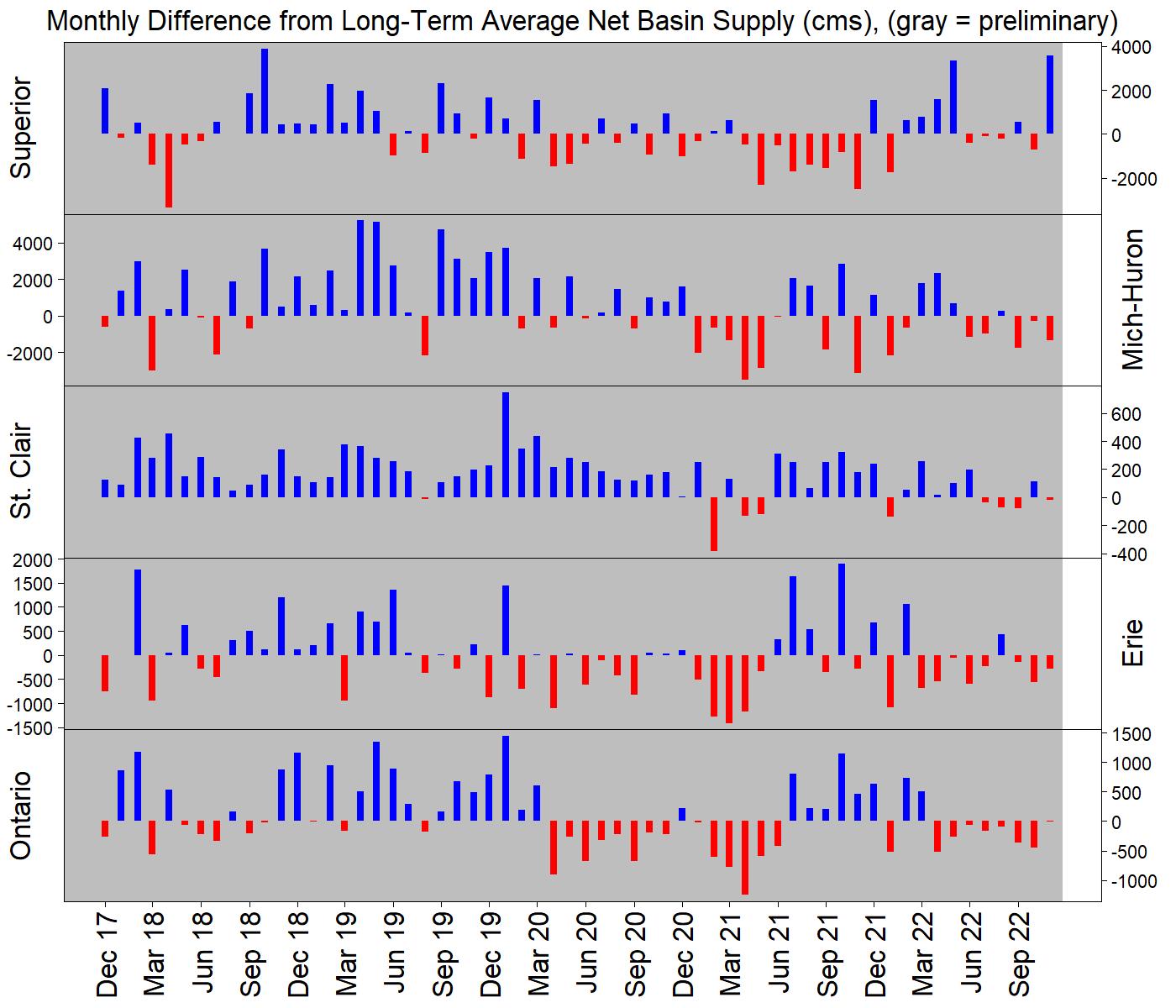
NBS relative to long term average NBS for the past 5 years. Retrieved from: https://www.lre.usace.army.mil/Missions/Great-Lakes-Information/Great-Lakes-Information-2/Basin-Conditions/
Places you can find more relevant 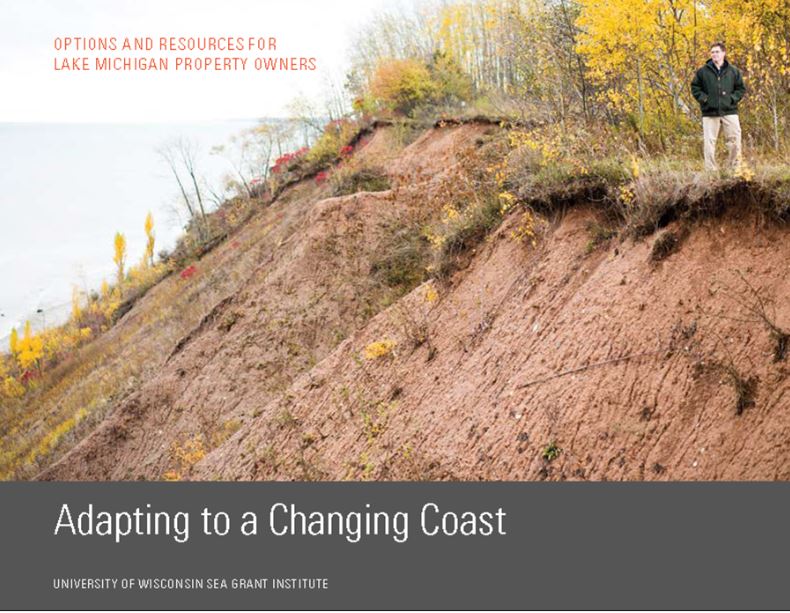 information:
information:
- Our Coastal Hazards page for details about the impacts of high water levels, including erosion, flooding, and navigation issues.
- Our blog post Resources for Great Lakes Coastal Property Owners: Where do I start? has links to many resources to help
- understand coastal hazards
- weigh the risks coastal hazards pose to property
- understand options for addressing these hazards
- get started on implementing actions if necessary.
- The Great Lakes Water Budgets from the University of Michigan gives more information about what makes the lakes go up and down.
- The US Army Corps’ Great Lakes Information page has tons of details on view water level data, water level forecasts, basin conditions, outflows, etc.
- Our Resource of the Month on US Army Corps of Engineers Monthly Bulletin of Great Lakes Water Levels.




